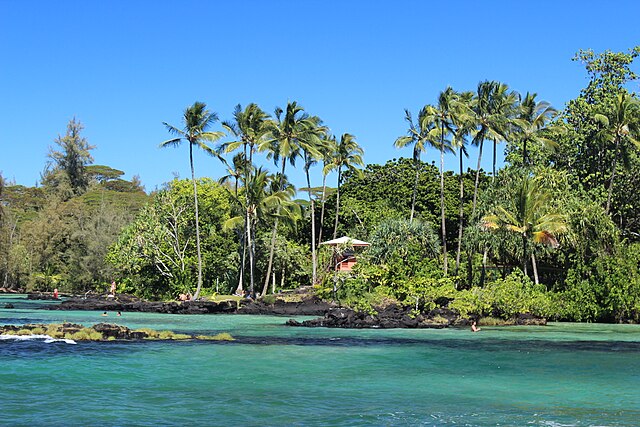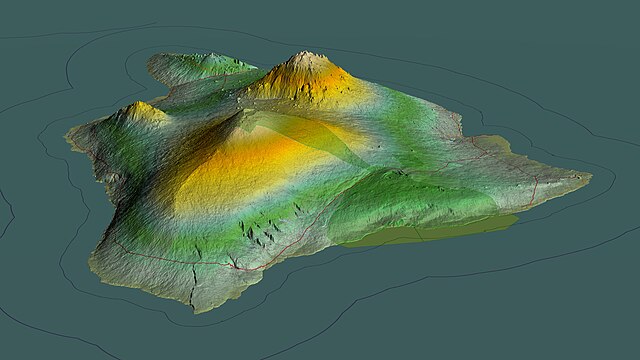Mauna Loa is one of five volcanoes that form the Island of Hawaii in the U.S. state of Hawaii in the Pacific Ocean. Mauna Loa is Earth's largest active volcano by both mass and volume. It was historically considered to be the largest volcano on Earth until Tamu Massif was discovered to be larger. Mauna Loa is a shield volcano with relatively gentle slopes, and a volume estimated at 18,000 cubic miles (75,000 km3), although its peak is about 125 feet (38 m) lower than that of its neighbor, Mauna Kea. Lava eruptions from Mauna Loa are silica-poor and very fluid, and tend to be non-explosive.
Mauna Loa as seen from the air. Hualālai is visible in the background.
Landsat mosaic; recent lava flows appear in black
Mauna Loa from Hilo Bay, December 2017
Mauna Loa's summit, overlaid with 100 m (328 ft) contour lines; its rift zones are visible from the air.
Hawaii is the largest island in the United States, located in the eponymous state of Hawaii. It is the southeasternmost of the Hawaiian Islands, a chain of volcanic islands in the North Pacific Ocean. With an area of 4,028 square miles (10,430 km2), it has 63% of the Hawaiian archipelago's combined landmass. However, it has only 13% of the archipelago's population. The island of Hawaiʻi is the third largest island in Polynesia, behind the north and south islands of New Zealand.
Landsat mosaic, 1999–2001
James Kealoha Beach, "Carlsmith Beach Park", in Hilo
Aerial view, 3D computer-generated image
A view of the Kohala Coast and adjacent volcanoes, taken from the slopes of Kohala Mountains about 6 miles (10 km) northwest of Kawaihae. From left to right: Mauna Kea, Mauna Loa, and Hualalai.







